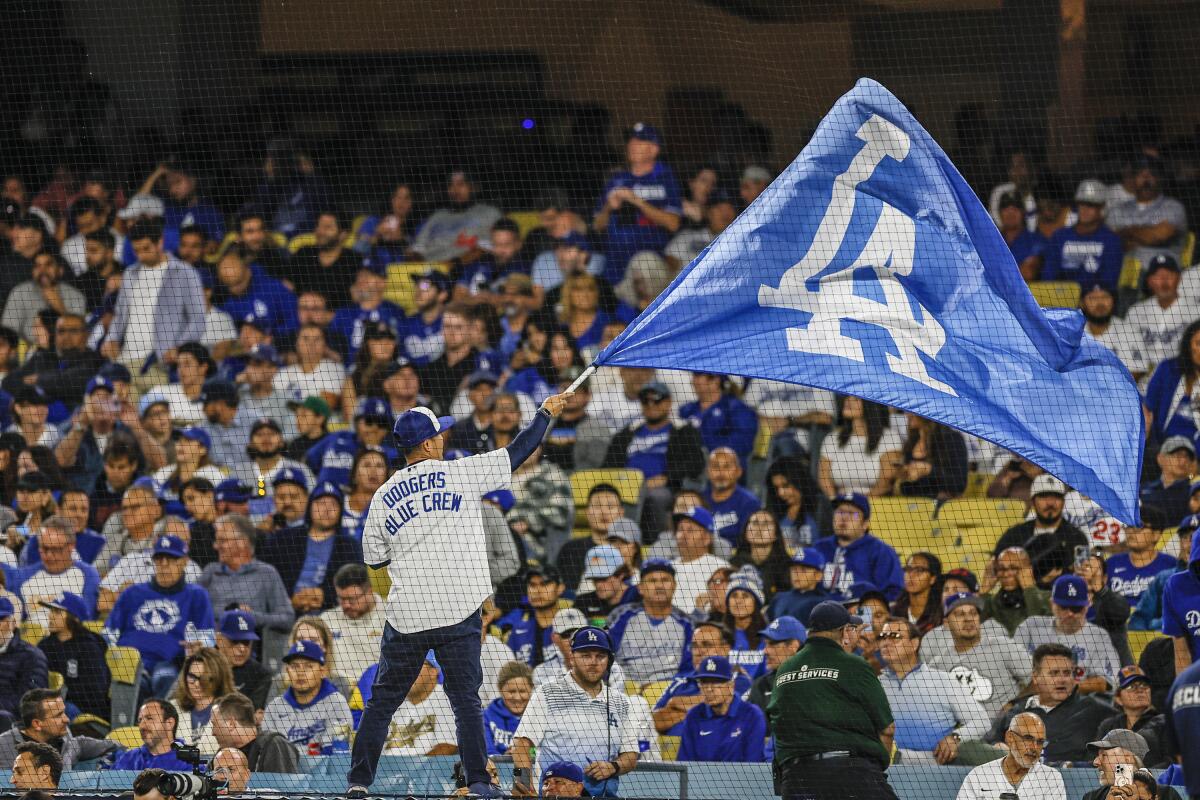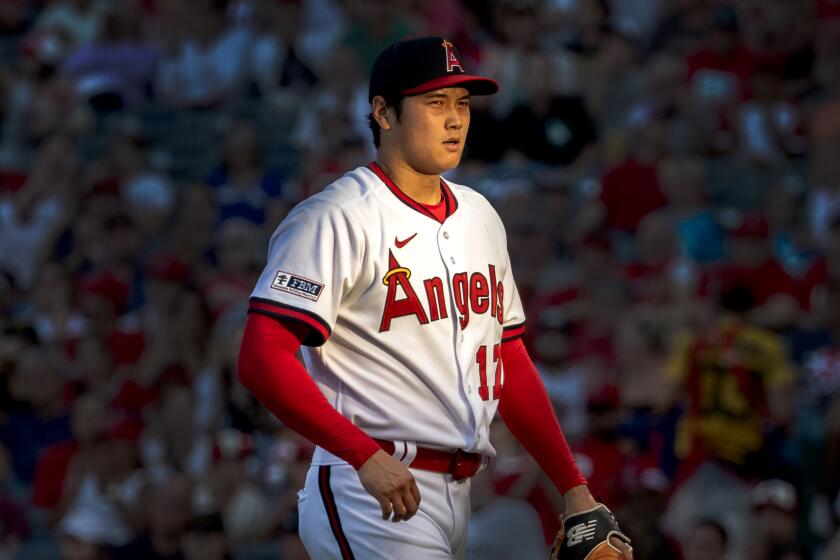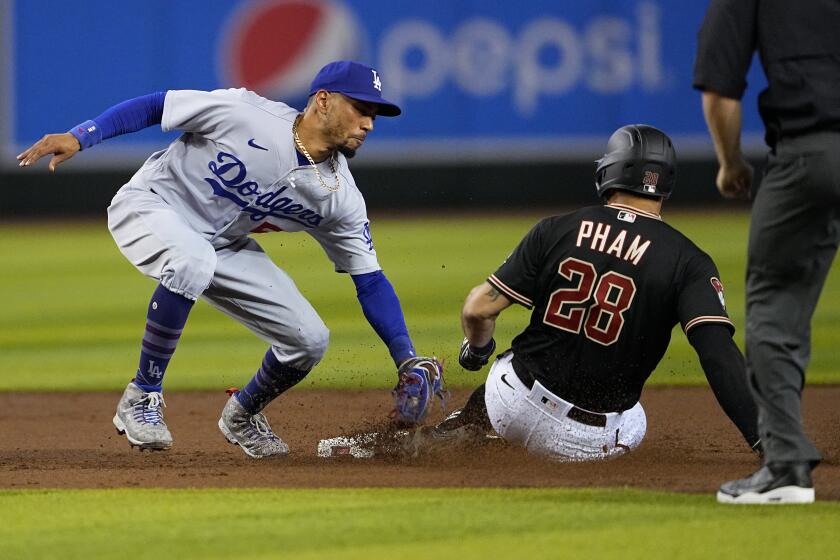The NBA in-season tournament has been a success. Could one work for MLB?

- Share via
NASHVILLE — A year ago, one conversation driver during the winter meetings had nothing to do with free agency or the trade market. Major League Baseball, historically hesitant to implement change, had just announced a series of new rules designed to produce a more entertaining product for the 2023 season.
A pitch clock. Infield shift restrictions. Bigger bases. A limit on pickoff attempts. It was a lot at once. Criticism was popular. But it all proved to be a success. Games were shorter with just as much action. Batting averages rose. Stolen bases increased. An improvement all around.
But Commissioner Rob Manfred has made clear more changes are coming. ESPN last month reported MLB is considering shaving two seconds off the pitch clock with runners on base. Before the World Series, Manfred told reporters he’d like to further limit the number of pitchers allowed on rosters to indirectly stymie the trend of starting pitchers logging fewer and fewer innings. The league isn’t done.
Don’t expect the two-way superstar to announce who he’s signing with like LeBron James did with “The Decision.”
And as MLB explores more ways to improve its product, it should take a look at what’s happening in the NBA this week. With the baseball world congregated at the Gaylord Opryland for this year’s winter meetings, the NBA continued its popular in-season tournament with two quarterfinal matchups Monday and Tuesday. The inaugural competition will conclude with the semifinals and the final this weekend in Las Vegas.
Initially met with skepticism and confusion, the NBA has accomplished its goal with the tournament: sparking more interest in regular-season games. Players have decided the tournament matters, and that’s what counts. Prestige will come with time.
MLB should be taking notes from Nashville. An in-season competition of some sort would spice up a 162-game season that usually has a third of the clubs out of the postseason race by August.
Such an event would have to be collectively bargained by MLB and the MLB Players’ Assn. The league has not yet discussed the topic with the union, according to a league spokesperson, but that could always change.
So, what would an MLB in-season tournament look like? It could go any number of ways. There would be logistical challenges to navigate. But here’s one hypothetical framework:
GROUP PLAY
- Five groups of six teams.
- Three-game series between each team in each group for 15 total group-play games.
- Group play would be held during the regular season and count as regular-season games (as is the case in the NBA’s in-season tournament).
Betts, a six-time Gold Glove winner in right field, split his time between the outfield and infield in 2023.
KNOCKOUT STAGE
- The five group winners and three wild cards would advance to the quarterfinals.
- The quarterfinals are four three-game series held the weekend leading into the All-Star break at the higher-seeded team’s ballpark.
- The semifinals are single-elimination games held as a doubleheader the Friday after the All-Star Game. The final is held Saturday or Sunday.
INCENTIVES
- Players and coaching staffs receive monetary compensation for winning the tournament, finishing in second place and reaching the semifinals.
- The championship team has its first pick bumped up or receives an extra compensation pick in the next draft. MLB could also add a postseason component as a reward.
- MLB makes a donation to a charity of the championship team’s choice.
- The league sells the television rights to a network or streaming service, adding another revenue stream to be split among the parties.
There are, undoubtedly, holes in that mode. Any change would undoubtedly meet resistance. Players and clubs would be hesitant to add even just a few games to the schedule. There are significant hurdles.
But the league and union worked together to make the World Baseball Classic happen in 2005. They recognized an opportunity to grow the sport. This could be another one.
More to Read
Go beyond the scoreboard
Get the latest on L.A.'s teams in the daily Sports Report newsletter.
You may occasionally receive promotional content from the Los Angeles Times.













